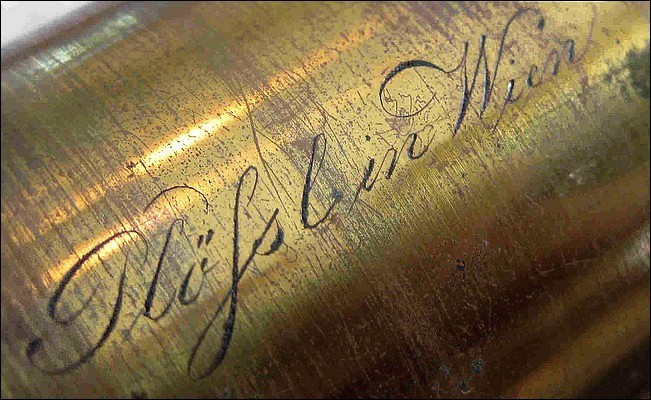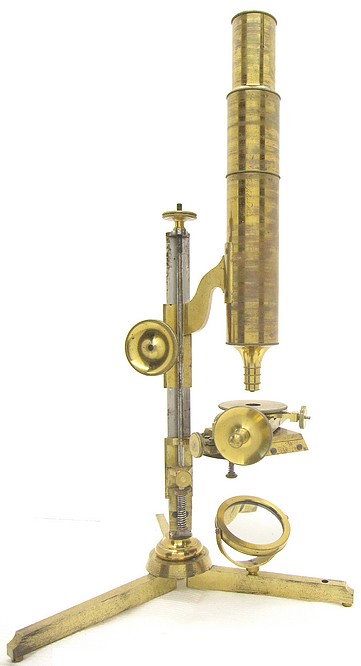
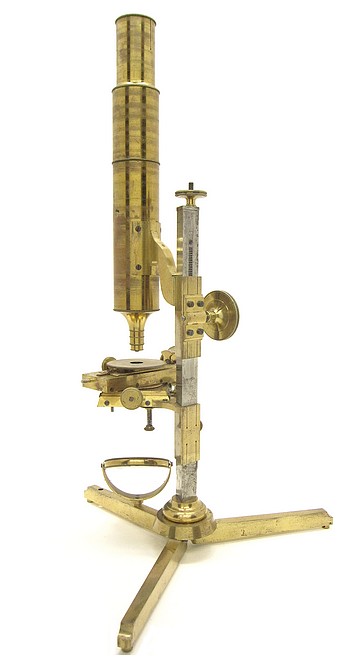
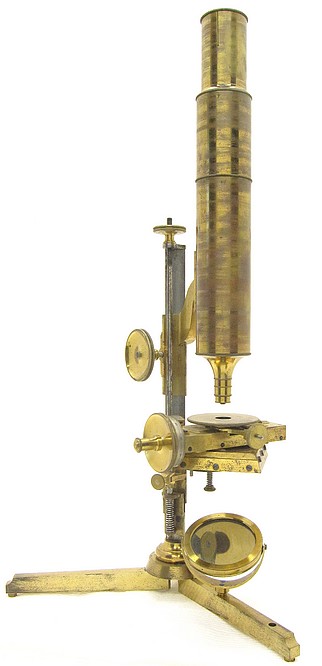
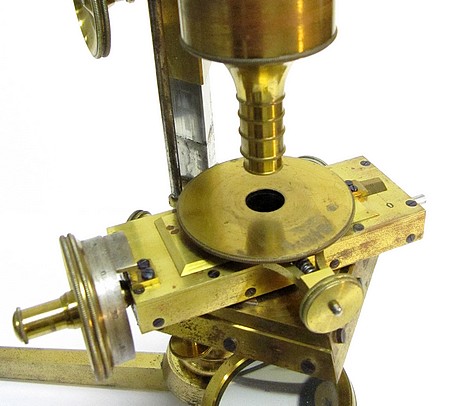
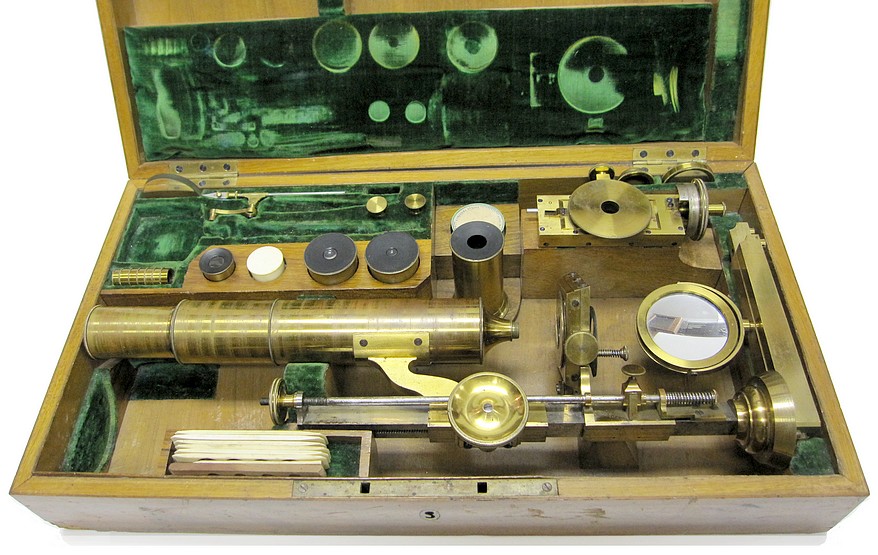
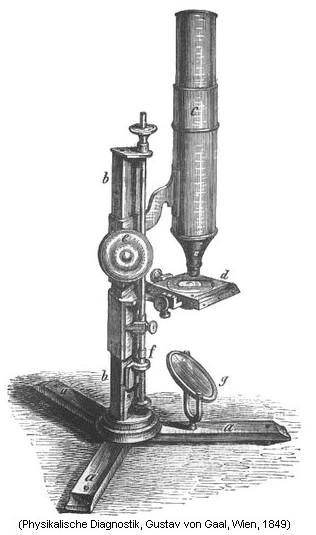
Georg Simon Plössl (1794-1868) began his career with the Voigtlaender optical firm in Rauhensteingasse Vienna, Austria. In 1823, he started his own business. By 1845, the business employed 36 workmen. His firm produced both microscopes and telescopes and was renown for the improvements he made to achromatic microscope objectives.
A similar example of this microscope, dated 1840, is in the Billings Microscope Collection; it is described as follows:
"A folding tripod base supports the triangular pillar of this instrument (Fig. 72), that is 9-3/4 inches high and rests on 1/2-inch-diameter double circular bases; a rack is cut at the back. The single mirror is fixed to the front foot on two jointed arms, is 2 inches in diameter, and has a black plaster back. The stage plate is 2-1/2 inches square and fixed diagonally to the casing. The upper section is mechanical and moves in two directions by milled-head screws. On a lever beneath the stage is a cylinder for condenser or diaphragm {in the present example, there is no cylinder, but instead there is an adjustable aperture diaphragm}. The pinion is a single milled head, 1-3/4 inches in diameter, in a casing 2-1/2 inches long with a 1-1/4-inch angular arm attached to the tube by a plate and four screws. The fine adjustment is a milled-head steel rod 10 inches long from the top of the pillar. It passes through a socket with a screw clamp on the stage casing to a plate at the base of the pillar and terminates with a milled head and heavy steel spiral spring. The fine adjustment screw at the top is 1-14 inches in diameter. The body tube is 7-1/2 inches long and 1-5/8 inches in diameter and has a screw division 5 inches above its lower end. The eye section is 2-3/8 x 1-5/16 inches, screws in, and is sprung. Height is 17 inches. It is signed on the tube, "Plössl in Wien." The instrument is an example of Plössl's large-type microscope; he continued the use of this style steel rod fine adjustment until the late 1860's."
The example in this collection is supplied with a number of accessories among which are screw-together objectives numbered 1-7, which are designed to be used in sequential combinations to vary the magnification. Also included are three eyepieces numbered 1-3, an additional lowest power eyepiece contained in an alternate screw-on upper tube section, a stage forceps, a live box, a glass dish with concave surface, a double ended ivory box with screw-on covers with each section housing an engraved glass stage micrometer, a stage mounted adapter to hold the glass micrometers, a double lens hand loupe, a number of ivory and wood sliders each containing multiple specimens, and a fine example of a Fraunhofer type mechanical stage micrometer. The microscope had other accessories, which are now missing; among them was a free standing bulls-eye condenser and a Selligue prism.
